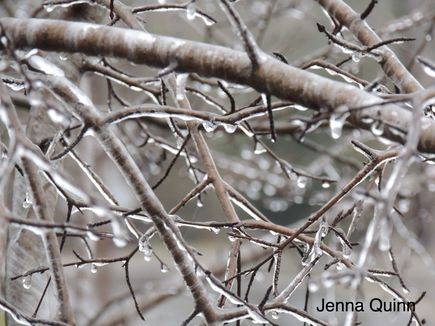|
By Jenna Quinn Scarves, mittens, toques, snow pants, and boots; In Canada, we know how to bundle up to beat the cold. Even our wildlife has to adapt to winter weather and different species use a variety of interesting and sometimes unique ways to keep warm each winter. Perhaps most noticeable are the species that simply flee the cold for a southern vacation. Many birds and large mammals avoid the blustery winter weather by travelling to a warmer spot, where there is more food to be found. The Arctic Tern makes the longest annual migration of any bird. According to the Greenland Institute of Natural Resources, it travels an incredible 71,000km each year! Conversely, some herds of Woodland Caribou migrate only short distances to the closest location where they can still find food. Another strategy is to sleep through the snow. This can be tempting to even the toughest Canadian when the temperature drops below -30°C, and a warm bed is waiting. Some bears, bats, chipmunks, salamanders, and bees all hide away in caves, underground, or in tree or rock crevices and sleep until spring. Garter Snakes hide out in large groups over winter and are quite the spectacle to see when they emerge the following spring. Some species make seemingly small, but important changes, thickening up their fur coats for the winter and wearing white to camouflage against the snow. For example, the Arctic Fox uses a warm white winter coat to survive the cold. Rabbits, among others, switch their diets from grasses and herbs to bark, twigs, and buds which are much easier to find in winter. Most butterflies endure the winter in a different lifecycle stage, as an egg or chrysalis that has a tough outer shell able to tolerate the cold weather. Interestingly, the Mourning Cloak butterfly, common in southern Ontario, remains in its delicate butterfly state all winter. It finds a crack in a tree or rock and snuggles in for a long rest. This allows it to be the first butterfly out in the spring, getting first dibs on the food before more competition arrives. One of the most fascinating winter survival strategies is that of the Wood Frog, an amphibian found across Canada including the tundra. To survive these chilly conditions, the Wood Frog stays near the surface of the ground, just below the leaf litter, and actually freezes and thaws with the surrounding environment. There are special proteins in the frog’s blood that allows it to freeze, which keeps ice from forming in the cells by dehydrating them. This prevents the frostbite we get if our skin is exposed to freezing temperatures. Don’t let the cold keep you indoors this winter! Get outside and see what evidence you can find of Canada’s winter wildlife. This blog is also posted on the rare Charitable Reserve's blog.
1 Comment
Kathleen
3/31/2017 01:32:06 pm
We leave brush piles in our bush for wildlife to shelter in. Noticed chickadees using these snow covered piles to roost in really cold weather. They make one or two holes and can be seen going in and out on very cold days(-35) and at night. Just like an igloo.
Reply
Leave a Reply. |
ELB MembersBlogs are written by ELB members who want to share their stories about Ontario's biodiversity. Archives
January 2023
Categories
All
|



 RSS Feed
RSS Feed